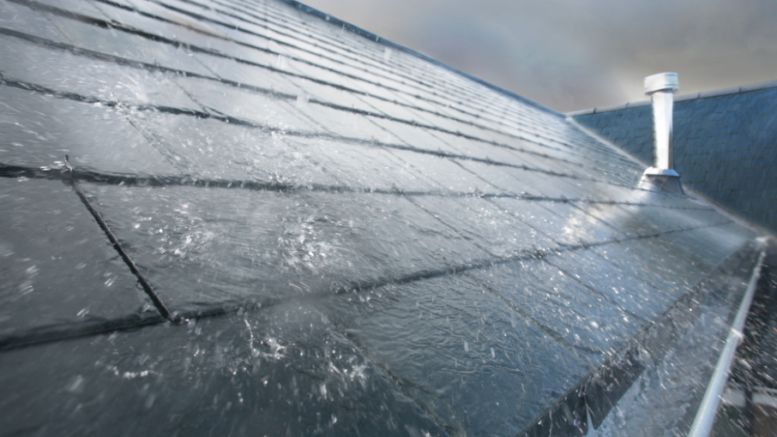The roofing industry has achieved remarkable growth over the past few years. Valued at nearly $22 billion in 2022, the U.S. roofing market is projected to grow at a 6.8% compound annual growth rate between 2023 and 2028. Employment, meanwhile, is expected to increase by 5% over the next decade.
While new construction is fueling a good bit of this growth, a great deal of the money to be made in the roofing business comes from customers who need to repair or replace their existing installations as a result of storm damage. Hurricanes, blizzards, hail, and heavy rain all take their toll, so sooner or later most homeowners and business owners must face the fact that their roofs are not going to make it through another storm season. A recent Washington Post article notes that weather disasters affected one in 10 homes in 2022 alone.
Before the storms begin to rage, roofing companies can position themselves for success by taking a number of important steps that will enable them to respond quickly and effectively to customers desperate to get their roofs fixed, reinforced, or replaced.
Market in Advance
The more a roofer connects with potential customers and the community, the more likely those prospects will be to remember the business and its reputation for quality work before the next storm hits. Optimally, roofing companies will be marketing themselves on an ongoing basis anyway, using everything from traditional vehicles (word-of-mouth, advertising, participation in community events) to online platforms (interactive company website, search engine optimization, social media channels) and digital marketing software. Effective lead tracking, online client communication, and simple scheduling processes ultimately will improve the company’s connection with prospective customers.
Stock Up on Inventory
Before the storm season kicks into high gear and suppliers are flooded with orders, roofing businesses should stock up early and ensure they have a complete inventory of needed supplies on hand. Roofers also need to recognize that supply chain issues persist, which could negatively impact the number of projects they can handle. As a result, they should maintain regular contact with manufacturers and suppliers (and potentially establish relationships with new suppliers) to ensure needed stock can be delivered on time.
Expand Bandwidth
While stocking up on inventory is essential, it is equally important for roofing companies to have enough staff to handle the increased demand for work that could arise during storm season. With that in mind, roofers might consider hiring workers with less experience before storm season even begins. Doing so gives the company time to conduct training and provide novice workers with some initial experience in the field. Roofers can also expand their search for temporary workers to surrounding states or subcontract work to other roofing companies. Regardless of which option is pursued, it is important to offer all workers competitive compensation and incentives. While doing so will increase operational costs, having a good team on hand to tackle incoming work will be well worth the investment.
Leverage Technology
Just as technology can improve marketing for roofers, it can also be used to significantly enhance on-the-job communications between team members and update work progress. Whether at the office or jobsite, project management software can be used to keep track of change orders, purchases, project photos, messages, and follow-up reminders, making it easier for supervisors and office managers to be in sync with what’s happening in the field. It can also be used to handle other aspects of the business, from lead generation and estimating to invoicing and scheduling.
Technology can also play a critical role in improving worker safety. By using drones and visual mapping systems, for example, roofing companies can get detailed specs of a home damaged by storms before hitting the jobsite. This allows the roofer to keep its team away from dangerous sites that might still be flooded or structurally unsound. Similarly, roofers could use infrared cameras to identify building vulnerabilities and potential structural problems before sending workers in to handle roof restoration work.
Roofing companies are even employing technology to track weather patterns. Weather tracking tools provide roofers with comprehensive weather history, maps of areas impacted by storms, predictions, aerial views, and more. Using such tools, roofing companies can stay ahead of the anticipated storms and keep their crews safe, while maintaining an advantage over competing roofers.
Keep Up with Roofing Trends
While it is important for roofing companies to market effectively, stock up on inventory, and hire enough workers in advance of the storm season, it is also essential for roofers to stay up-to-speed with respect to new roofing trends and materials. Doing so undoubtedly can help in making sound recommendations to customers seeking to restore or strengthen their homes in advance of the storm season. Staying current with such trends also sends a clear message to current and prospective customers that the roofer is innovative and focused, with a finger on the pulse of the industry’s latest solutions.
The latest roofing trends being requested by home and business owners include:
· Environmentally friendly roofs. With increased interest in climate change and energy efficiency, more consumers are opting for green technologies in their homes and businesses. With respect to roofing, that typically translates into a reliance on solar panels, which are now available in sleeker and even rail-less designs. Roofers can also offer energy conscious consumers a range of other choices, such as light-colored roofing materials (which keep buildings cooler during hot months), cool roofing (made from naturally cool materials such as metal and offering higher solar reflectance and thermal emittance), and even green roofs (rooftop gardens featuring a layer of vegetation which lowers roof temperature).
· Metal and composite roofs. While theyhave been around forever, modern metal roofs (typically zinc, copper, steel, or aluminum) have made a big comeback, with owners attracted to their durability, aesthetic look, and noise reduction features. Composite roofs, meanwhile, are also growing in popularity. Made from synthetic materials such as rubber or fiberglass, composite roofs are both environmentally friendly and cost-efficient. They are also surprisingly durable and relatively easy to install.
· Smart roofs. Like virtually everything else, rooftops can now be connected to Wi-Fi via sensors which alert home or business owners to potential problems such as leaks or blocked drains. Roofers are also seeing demand rise for roofs made from new coating technologies. The polymers in thermoplastic shingles, for example, separate when heated by the sun then close when they cool, creating new bonds which seal minor cracks and scratches. Water-repellant shingles, meanwhile, easily shed water, allowing dirt to simply wash away in the rain.
Roofing companies are also employing new technologies to handle everyday work, from robotic shingle installers to drones which can measure and inspect roofing projects. Bottom line, roofers — like other professionals — must constantly work to stay up to speed with market trends and customer demands so that they can respond quickly and effectively whenever a problem occurs with the latest in industry innovations.
About the author: Ralph P. Sita Jr., CPA is a lifetime successful serial entrepreneur. Prior to co-founding FieldBin he co-founded the online cybersecurity learning platform, Cybrary, with over 3 million users. Sita is also CEO and Founder of TrainACE, a brick-and-mortar advanced security computer training company. For more information, visit fieldbin.com.





Be the first to comment on "Make Sure You Can Respond Quickly and Effectively After Severe Weather"